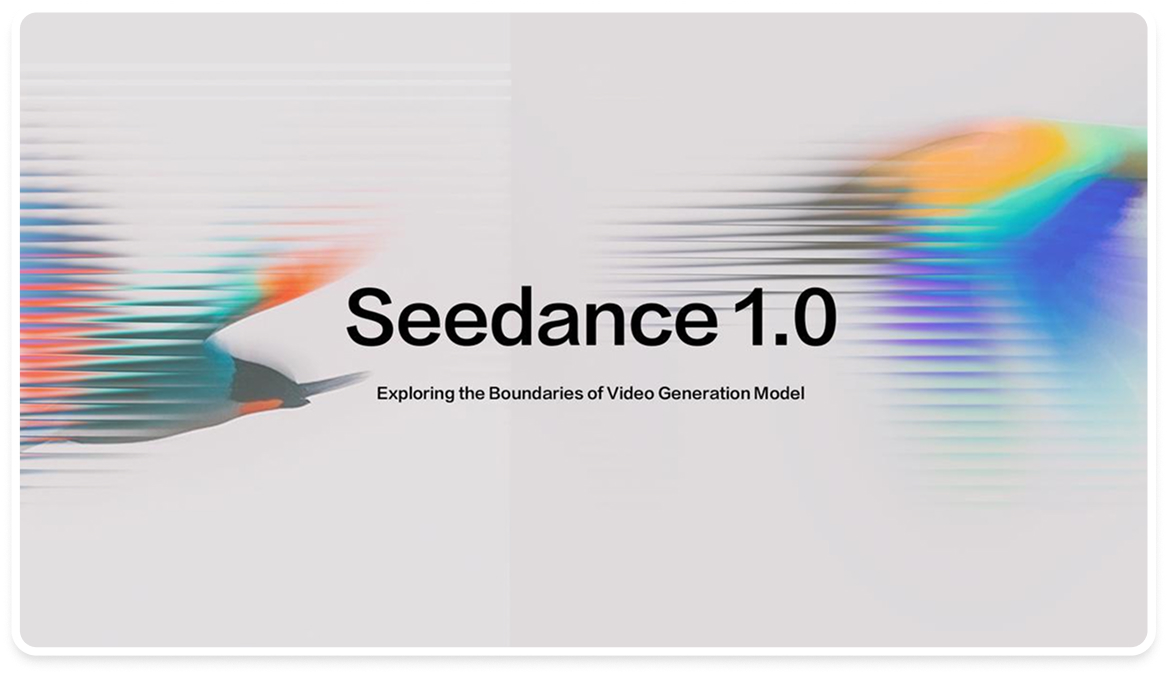Seedance prompting guide
Master the art of prompt writing for both image-to-video and text-to-video generation. Learn how to create compelling videos with precise control over motion, camera work, and storytelling.

Table of contents

Image to Video Techniques

Text to Video Techniques
 Image to Video Techniques
Image to Video TechniquesBasic Prompt Words
Prompt = [subject] + [Motion] , [Background] + [Motion], [Camera] + [Motion]...
1. Simple and direct
Try to use simple words and sentence structures _ The model will expand the prompt words based on our expression and understanding of the image to generate a video that meets our expectations.
2. Negative prompt words are ineffective
The model does not respond to negative prompt words.
3. Basic structure
Graphic videos already have scenes, so try to minimize (or even avoid) the description of static/unchanging parts . When the moving objects are clearly pointed out , describe the moving parts more , including the movement of the subject the movement/change of the background, and the movement of the lens.
4. Characteristic description
When the subject has some prominent features, you can add the prominent features to better locate the subject such as an old man, a woman wearing sunglasses, etc. When describing sports, the key degree adverbs must be clear , such as fast and large.
5. Follow the picture
You need to write based on the input picture content You need to clearly write the subject and the action or camera movement you want to do. Be careful that the prompt words do not contradict the picture content/basic parameters . For example, if there is a man in the picture, the prompt word is a woman dancing; if the background is grassland, the prompt word is a man singing in a cafe; if there is no jewelry on the hand, the prompt word is the hand with jewelry; for example, the basic parameters select a fixed lens, but the prompt word is written as a lens surround.
Multiple continuous action prompt words
The model has a strong response to the quality of multi-snot actions, supports multiple continuous actions in a temporal sequence and different actions of multiple subjects.
Prompt word = Subject 1 + Movement 1 + Movement 2
Prompt word = Subject 1 + Movement 1 + Subject 2 + Movement 2 ...
Just list them one by one, and the model will expand the prompt words according to our expression and understanding of the image to generate a video that meets our expectations.
Camera movement prompts
You can use natural language to describe the lens changes you want in the prompt words, supporting surround, aerial, zoom, pan, follow, handheld and other lens movements, as well as lens switching. Lens language response is the strength of seedance 1.0.
Adverbs of Degree
If you want to highlight the frequency and intensity of actions, or the characteristics of the subject in the video, use adverbs of degree appropriately.
Key principles
1. Clarity : The model cannot obtain the degree of motion from the input reference image, so it must be made clear in the prompt, otherwise the model will supplement it based on its own understanding, which may deviate from the user's intention For example, change 'the car drove by' to 'the car drove by quickly'.
2. You can exaggerate the degree appropriately to enhance the expressiveness of the video: for example, changing 'man roaring' to 'man roaring madly' and 'wings flapping' to 'Wings flapping vigorously' will make it easier to get the desired effect.
Level prompt words:
fast, violent, large, high frequency, strong, crazy...
 Text to Video Techniques
Text to Video TechniquesBasic Prompt Words
Prompt = [subject] + [Movement] + [Scene] + [Lens], [Style]...
* Subject + motion + scene are the most core and basic elements. The model will expand the prompt words and generate a video that meets expectations.
* Referring to the videos, the prompt word guidelines for continuous action, camera movement, degree adverbs, etc. are also effective for the literary videos, and negative prompt words do not respond.
How to better describe what you need:
1. Detailed character description
Pay attention to the character's appearance, clothing, and posture.
2. Environmental details
Detailed descriptions of natural environments (such as mountains, deserts, waterfalls, etc.) or architectural environments (such as studios, bathrooms, etc.) can help you emphasize the visual and sensory experience of the scene.
3. Combination of emotions and dynamics
By depicting the emotional states of the characters and the dynamics of the environment, a rich narrative is created.
4. Rendering of atmosphere
Usually we have some techniques to render atmosphere in visual presentation For example, we can use the description of light: dusk, early morning, dim, warm light, etc.